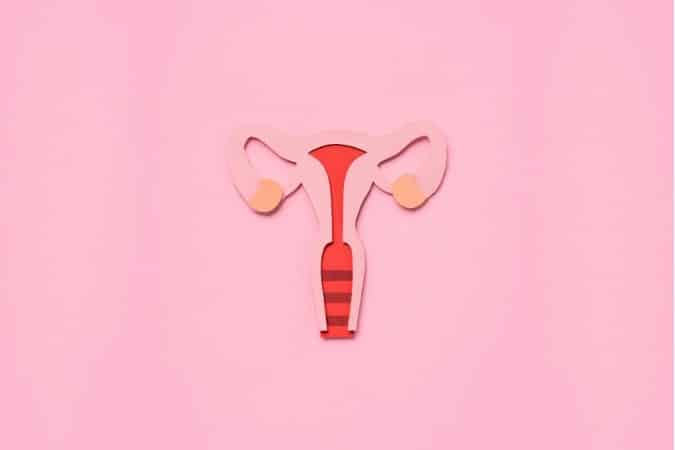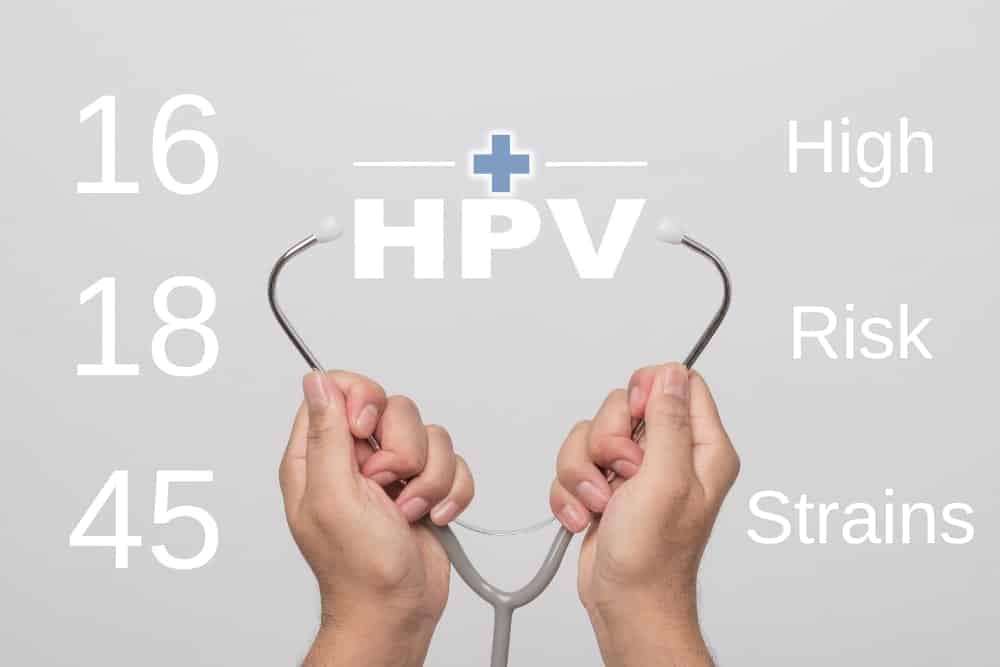High-Risk HPV, 16 18 45: What You Need to Know
The family of human papillomaviruses contains a variety of over 150 different strains of HPV. These strains have evolved over time to have different ways to infiltrate and evade the immune system of individuals, causing different disease progressions.
Nearly all sexually active individuals will come into contact with a strain of HPV. It is estimated that 80% of women will contract an HPV infection at some point in their lifetime.
While most cases of HPV infections are asymptomatic, some can manifest in lesions from genital warts to cervical cancer. A few HPV strains, in particular, HPV 16, 18, and 45 have been classified as the most high-risk HPV types, accountable for approximately 70% of cervical cancers around the world.
The prevalence of high-risk HPV infections is estimated at around 22.7%. The most common of these high-risk infections to cause changes to the cervix were HPV types 16, 18, and 45.
High-Risk HPV
High-risk strains often do not cause symptoms so many are unaware that they have contracted a strain of HPV. The high-risk strains develop slowly over time, causing minor changes to the cells of the cervix, anus, or oral cavity.
High-risk strains that persist for a number of years can eventually alter the genome of an individual and increase the risk that cancer will evolve.
12 HPVs (16, 18, 31, 33, 35, 39, 45, 51, 52, 56, 58, and 59) are defined by the World Health Organization (WHO) as being high-risk cancer-causing types. Together these HPV’s cause half a million cases of cervical cancer per year worldwide. These strains can also cause cancers at other sites, including the penis, vagina, and vulva and in the oral cavity.
What Makes High-risk Strains More Cancerous?
The reason high-risk strains are more likely to cause cancer is due to where the virus has evolved to infiltrate the body and specific proteins within the viral machinery.
Particular areas within the cervix lining are more susceptible to fostering cell replication than others. HPV that gains access to the transformational zone in the cervix have been linked to higher rates of cancer progression. This site has a lower density of immune cells called Langerhans cells, that provide our first line of defense in fighting off pathogens.

Two viral proteins, E6 and E7, have also been found to be more active on high-risk strains of HPV. These proteins are thought to be responsible for allowing the virus to enter the upper layers of the epithelial tract. The proteins have also been found to downregulate toll-like receptors of the innate immune system, leading to greater threats to the individual’s DNA.
These E6 and E7 proteins appear to be inactive or weakly active in low risk HPV types.
High-Risk HPV Strains and Cancer Rates
Despite high-risk strains increasing one’s risk of cancer, contracting a strain does not mean you are going to get cancer. The majority (90%) of individuals will clear the infection within three years and have no complications. Of the 10% of cases that become chronic only 1% will result in cervical cancer.
Women with a high-risk HPV strain have a 210-fold higher risk of developing a CIN 3 complication in 6 years as compared with negative women. This means that instead of every 9 in 10,000 women contracting cervical cancer, 210 in 10,000 with a high-risk strain will develop into cancer.
HPV Testing and mRNA E6 E7
HPV testing can detect which strain of HPV you have contracted and indicate whether you have been infected with a high-risk strain.
To provide a better understanding of the strains risk of developing into cancer, mRNA E6 and E7 testing can also be done. Testing can be done to detect the presence of these proteins within an individual.
E6 and E7 are usually expressed at low levels during a transient HPV infection. When the virus has integrated into the individual gnes, the oncogene transcripts are over-expressed, leading to the development of cervical cancer.
HPV E6 and E7 mRNA expression level are highly correlated with the severity of cervical lesions and can be tested and used as a biomarker for HPV infections that are more likely to progress to cancer.
Having more reliable and better testing for HPV has played a significant role in reducing mortality from cervical cancer in the past several years. Staying on top of your pap testing and monitoring your situation with your doctor is key to fighting off high-risk strains.
What Can You Do If You Have Contracted HPV?
In addition to regular testing, fighting off high-risk strains of HPV requires a healthy immune system. We believe implementing a healthy lifestyle is built around four foundational lifestyle therapies:
1. Nutrition and Supplementation
The gut is home to around 80% of the immune system. Consuming a fruit and vegetable-rich diet, limiting sugar and refined carbohydrate intake has been found to have a positive effect on the overall function of the immune system.
Papillex is a supplement which is designed specifically to help your body respond to HPV and is packed full of ingredients which have been researched with HPV in mind.

2. Psychological Stress
Prolonged stress has been found to create an imbalance in the ability of the body to fight incoming infection, by over activating areas of the immune system that exacerbate chronic illness. Engaging in daily stress management practices like meditation, exercise, and socializing can have a positive effect in improving the bodies overall resiliency.
3. Sleep
Getting adequate rest, seven to eight hours of quality sleep per night, allows the immune system time to revitalize, balance hormones and it initiates cellular repair. Setting a regular bedtime, limiting caffeine intake in the afternoon, and eating a nutrient-dense diet are all ways we can improve our sleep quality.
4. Exercise and Movement
From improved circulation to naturally increasing the bodies white blood cell and antibody count, staying active has a range of benefits in helping support the immune system and defense against disease. We recommend talking daily walks and engaging in bi-weekly strength training and aerobic activity.





